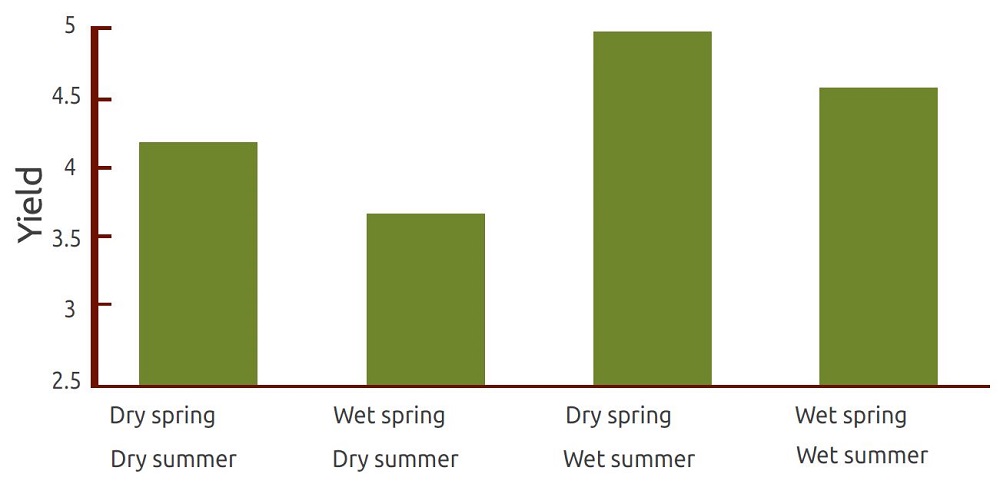- Home
- Knowledge library
- Take-all disease in cereals: prevent, detect, control
Take-all disease in cereals: prevent, detect, control
Take-all is an important soilborne disease in UK cereals. Learn about the pathogens, the classic symptoms and potential control options.
Cereal disease management homepage
How serious is take-all in UK cereal crops?
Take-all is an important disease of UK winter wheat, especially as control with fungicides or varietal resistance is extremely limited. The disease is moderately important in winter barley. Spring sown cereals are not as badly affected.
The fungus is ubiquitous in UK arable land and reduces yield and grain quality. Estimates suggest the disease affects half of UK wheat crops, with average yield losses of 5–20%. However, more than half of the crop can be lost when disease is severe.
Rotational strategies are essential for control.
Soil type matters
Take-all causes most damage on light soils (sand, sandy loams and loams), where the fungus spreads more easily and the loss of active roots has a large effect on water and nutrient uptake.
The disease tends to be worse on chalky downland soils that are more drought prone. Whereas, well-structured, water-retentive soils, such as chalky boulder clays, result in less damage. However, even on these chalky boulder clay soils, losses of 10–20% are common in second and third wheat crops. On less well-bodied soils, yield losses can be much higher. It may even become uneconomic to grow second or subsequent wheat. However, risk can differ even within a soil series. For example, among chalky boulder clays, crops on the Ragdale series are more prone to take-all than those on the Hanslope series.
Poor drainage and nutrient status also encourage the disease. Take-all is particularly encouraged by early sowing and light, puffy seedbeds. The effect of soil pH on take-all is complex, but infection in alkaline, light, soils tend to be most damaging. However, severe attacks can also occur in acid patches.
The weather also has a large influence on the impact of take-all. Dry conditions during grain filling exacerbate the damaging effects of the disease on root function.
Effect of soil moisture on yield in a severe take-all epidemic
 AHDB
AHDB
A first wheat crop usually appears to remain healthy. However, moist soil builds up inoculum that impacts following crops. Favourable weather for disease development in successive years leads to severe 'take-all years'. More rarely, unfavourable weather over several years can result in crops in which take-all is almost absent.
Take-all is most prevalent in Eastern England, where cereal-dominated rotations are most common. Severe infections also occur in the West and South-West, but wetter weather during grain filling means the effects are often less severe.
Factors that favour take-all
- Second, third or fourth cereal crop
- Light or alkaline soils
- Warm winter and wet spring/early summer, which encourages take-all development
- Dry summer, which exacerbates take-all symptoms and increases yield loss
- Poor drainage, low nutrient status, early sowing and light, puffy seedbeds
- Cereal volunteers and grass weeds, especially couch and bromes, in break crops that carry the disease through
Take-all life cycle and disease symptoms in cereals
Learn about the pathogen, its life cycle and the symptoms commonly seen on infected cereal crops.
Take-all life cycle and disease symptoms in cereals
Take-all decline
Take-all is the major cause of ‘second wheat syndrome’ when yields of second wheat crops are frequently 10–15% less than those of first wheats. Take-all is usually most severe in the second to fourth successive cereal crop but yields generally recover, to some extent, in continuous cereals – ‘take-all decline’.
Non-chemical control of take-all in cereals
With varietal resistance and chemical options extremely limited, reduction of take-all disease severity and impact relies heavily on cultural control approaches.
Topics:
Sectors:
Tags:


.jpg)
